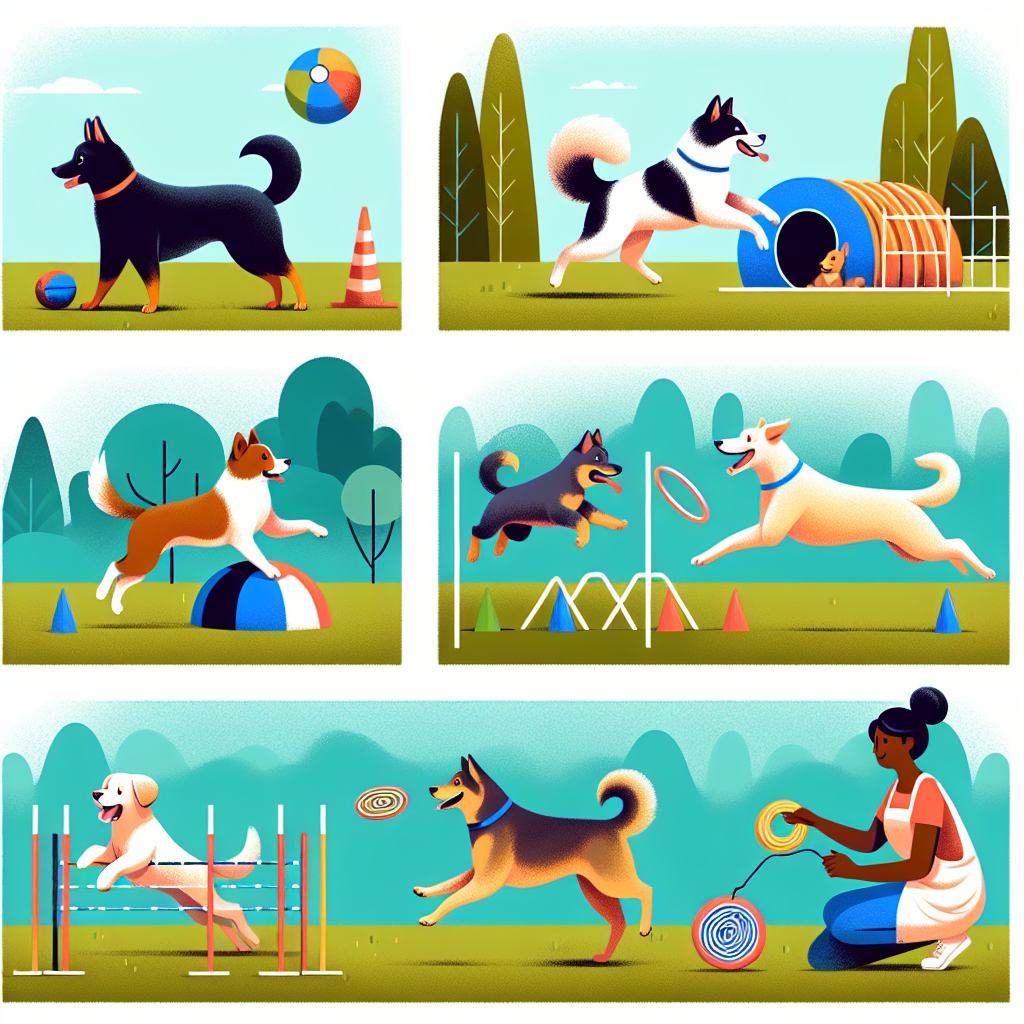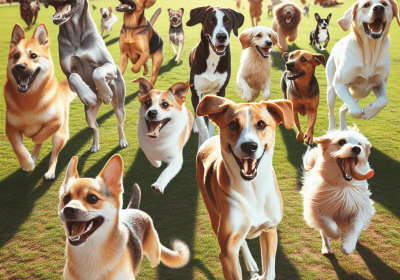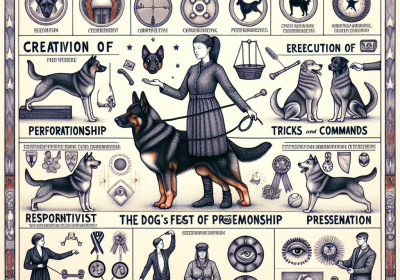Basic Freework Exercises for Dogs
Table of Contents
Basic freework exercises for dogs are foundational activities designed to enhance a dog’s physical and mental well-being through unstructured, natural movements. These exercises encourage dogs to explore their environment, engage their senses, and develop confidence and coordination without the constraints of formal training. By allowing dogs to move freely and interact with various textures, surfaces, and objects, freework exercises help improve their proprioception, balance, and overall fitness. Additionally, these activities can strengthen the bond between dogs and their owners, as they work together in a relaxed and enjoyable setting.
Introduction To Basic Freework Exercises For Dogs
Freework exercises for dogs are an essential component of canine training and well-being, offering numerous benefits that extend beyond mere physical activity. These exercises are designed to engage a dog’s mind and body, promoting overall health and fostering a deeper bond between the dog and its owner. Understanding the fundamental principles of freework exercises can help dog owners implement these activities effectively, ensuring their pets lead a balanced and fulfilling life.
To begin with, freework exercises are activities that allow dogs to move freely and explore their environment without the constraints of a leash. This freedom is crucial for their mental stimulation, as it encourages natural behaviors such as sniffing, exploring, and problem-solving. By providing opportunities for dogs to engage in these activities, owners can help reduce stress and anxiety, which are common issues in domesticated dogs. Moreover, freework exercises can be tailored to suit the individual needs and preferences of each dog, making them a versatile tool in any training regimen.
One of the primary benefits of freework exercises is the enhancement of a dog’s physical health. Regular physical activity is vital for maintaining a healthy weight, improving cardiovascular health, and strengthening muscles and joints. Freework exercises, in particular, offer a varied and dynamic form of exercise that can prevent the monotony often associated with routine walks or runs. For instance, incorporating activities such as agility courses, fetch games, or obstacle navigation can provide a comprehensive workout that targets different muscle groups and keeps the dog engaged.
In addition to physical benefits, freework exercises play a significant role in cognitive development. Dogs are intelligent creatures that require mental stimulation to stay sharp and content. Freework exercises challenge their problem-solving abilities and encourage them to think independently. Activities such as scent work, where dogs use their keen sense of smell to locate hidden objects, or puzzle toys that require manipulation to release treats, can significantly enhance cognitive function. These exercises not only keep dogs mentally active but also provide a sense of accomplishment and satisfaction.
Furthermore, freework exercises can strengthen the bond between dogs and their owners. Engaging in these activities together fosters trust and communication, as owners learn to understand their dog’s cues and behaviors. This mutual understanding is crucial for effective training and can lead to a more harmonious relationship. Additionally, spending quality time together through freework exercises can enhance the emotional well-being of both the dog and the owner, creating a positive and enriching experience for both parties.
It is important to note that while freework exercises offer numerous benefits, they should be introduced gradually and tailored to the individual dog’s capabilities and preferences. Owners should start with simple activities and gradually increase the complexity as the dog becomes more comfortable and confident. It is also essential to ensure that the environment is safe and free from potential hazards, as the dog’s safety should always be a priority.
In conclusion, basic freework exercises for dogs are a valuable addition to any training and wellness routine. They provide a holistic approach to canine health, addressing physical, mental, and emotional needs. By incorporating these exercises into their daily routine, dog owners can ensure their pets lead a balanced and fulfilling life, while also strengthening the bond they share. As with any training regimen, patience, consistency, and a keen understanding of the dog’s individual needs are key to successful implementation.
Benefits Of Freework Exercises For Canine Health

Freework exercises, a relatively novel concept in canine training, offer a multitude of benefits for a dog’s overall health and well-being. These exercises, which involve allowing dogs to explore and interact with their environment freely, can significantly enhance both their physical and mental health. By understanding the advantages of freework exercises, dog owners can better appreciate the importance of incorporating these activities into their pets’ routines.
One of the primary benefits of freework exercises is the promotion of physical health. Unlike structured training sessions that often focus on specific commands or behaviors, freework allows dogs to move naturally and engage in a variety of physical activities. This can include running, jumping, sniffing, and climbing, all of which contribute to improved muscle tone, cardiovascular health, and overall fitness. Additionally, the varied movements involved in freework can help prevent the development of repetitive strain injuries that might occur with more regimented exercise routines.
Moreover, freework exercises can play a crucial role in weight management. Obesity is a common issue among domestic dogs, leading to a host of health problems such as diabetes, arthritis, and heart disease. By encouraging spontaneous and varied physical activity, freework helps dogs burn calories more effectively and maintain a healthy weight. This, in turn, reduces the risk of obesity-related conditions and contributes to a longer, healthier life.
In addition to physical benefits, freework exercises offer significant mental health advantages. Dogs are naturally curious and intelligent animals that require mental stimulation to stay happy and healthy. Freework provides an excellent opportunity for mental enrichment by allowing dogs to explore new environments, solve problems, and engage their senses. This can help reduce boredom and prevent the development of destructive behaviors that often arise from a lack of mental stimulation.
Furthermore, freework exercises can enhance a dog’s confidence and reduce anxiety. Many dogs experience stress and anxiety in unfamiliar or challenging situations. By gradually exposing them to new environments and allowing them to explore at their own pace, freework can help build their confidence and resilience. This can be particularly beneficial for dogs that are shy or fearful, as it provides a safe and controlled way for them to gain positive experiences and learn to cope with new stimuli.
Another important aspect of freework exercises is the strengthening of the bond between dogs and their owners. Participating in these activities together fosters trust and communication, as owners learn to observe and understand their dogs’ behaviors and preferences. This can lead to a more harmonious relationship and improve the effectiveness of other training methods. Additionally, the shared experience of exploring and discovering new environments can be enjoyable and rewarding for both dogs and their owners.
In conclusion, freework exercises offer a comprehensive approach to enhancing canine health by promoting physical fitness, mental stimulation, confidence, and the human-animal bond. By incorporating these activities into their dogs’ routines, owners can provide a more enriching and fulfilling life for their pets. As the understanding of freework continues to grow, it is likely that more dog owners and trainers will recognize its value and integrate it into their training and exercise programs.
Step-By-Step Guide To Implementing Freework Routines
Implementing freework routines for dogs can be a rewarding endeavor, fostering both physical and mental stimulation for your canine companion. To begin, it is essential to understand the concept of freework, which involves allowing dogs to explore and interact with their environment at their own pace, thereby promoting natural behaviors and reducing stress. This step-by-step guide will provide you with the necessary tools to effectively incorporate freework exercises into your dog’s routine.
First and foremost, selecting an appropriate environment is crucial. Ideally, choose a safe, enclosed area where your dog can move freely without the risk of escaping or encountering hazards. This space should be free from distractions such as loud noises or other animals, ensuring that your dog can focus on the activities at hand. Once the environment is secured, gather a variety of objects and materials that can be used to create an engaging and stimulating setup. Items such as cardboard boxes, tunnels, soft mats, and different textured surfaces can be utilized to construct an intriguing landscape for your dog to explore.
Next, it is important to introduce your dog to the freework area gradually. Begin by allowing your dog to observe the setup from a distance, giving them time to acclimate to the new environment. As your dog becomes more comfortable, encourage them to enter the area and explore at their own pace. It is essential to remain patient during this process, as some dogs may take longer to adjust than others. Offering treats and positive reinforcement can help to build your dog’s confidence and encourage them to engage with the various elements of the setup.
As your dog begins to explore, observe their behavior closely. Take note of which objects and surfaces they are drawn to, as well as any signs of hesitation or discomfort. This information can be invaluable in tailoring future freework sessions to better suit your dog’s preferences and needs. Additionally, it is important to monitor your dog’s energy levels and overall well-being throughout the session. If your dog appears tired or stressed, it may be necessary to shorten the session or provide a break.
To maintain your dog’s interest and enthusiasm for freework, it is beneficial to regularly change the setup and introduce new elements. This can be achieved by rotating the objects and materials used, as well as incorporating different scents and sounds to further stimulate your dog’s senses. By keeping the environment fresh and engaging, you can help to prevent boredom and ensure that your dog remains motivated to participate in freework exercises.
Furthermore, it is essential to consider the duration and frequency of freework sessions. While the optimal length of a session may vary depending on your dog’s age, breed, and individual temperament, a general guideline is to aim for sessions lasting between 10 to 30 minutes. It is also advisable to incorporate freework into your dog’s routine several times a week, allowing for ample opportunities to reap the benefits of this enriching activity.
In conclusion, implementing freework routines for dogs requires careful planning and consideration, but the rewards are well worth the effort. By providing a safe and stimulating environment, gradually introducing your dog to the setup, and regularly updating the elements involved, you can create a dynamic and engaging experience that promotes your dog’s physical and mental well-being. Through patience and observation, you can tailor freework sessions to suit your dog’s unique needs, ensuring a positive and enjoyable experience for both you and your canine companion.






![The Dog Podcast Uncovers Startling Truths About What We Feed Our Dogs [Press Release]](https://theblogwave.com.au/wp-content/uploads/2024/08/canine-food-scaled-400x280.jpg)


